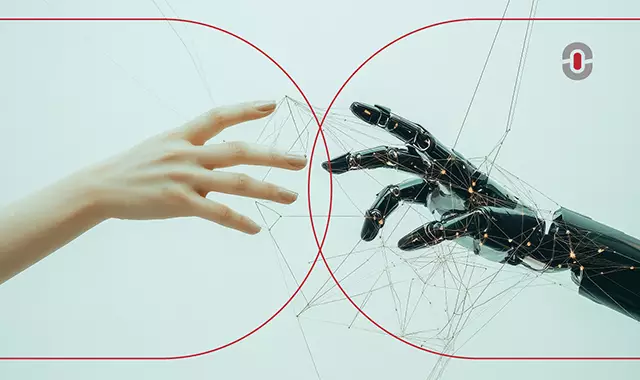Translation has long been a bridge between cultures, facilitating communication, trade, and global collaboration. Traditionally, human translators have been the cornerstone of this process, leveraging linguistic expertise, cultural understanding, and contextual awareness to produce high-quality translations. However, with the rapid advancements in artificial intelligence (AI) and machine learning (ML), the landscape of translation is evolving. Rather than replacing human translators, AI-powered tools are enhancing their capabilities, creating a symbiotic relationship that blends human intuition with computational efficiency.
This article explores how human knowledge and machine learning complement each other in translation, the challenges and opportunities this partnership presents, and practical strategies for leveraging AI while maintaining translation quality.
Machine learning, particularly in the form of neural machine translation (NMT), has significantly improved the speed and efficiency of translations. AI-powered systems analyze vast datasets to identify patterns and predict the most accurate translations. Key benefits of machine learning in translation include:
- Speed and Scalability – AI can process large volumes of text at a pace that far exceeds human capability, making it ideal for real-time translation needs.
- Consistency – Machine translation ensures uniformity in terminology and phrasing, especially useful in technical, medical, and legal translations.
- Cost-Effectiveness – Automated translation reduces labor costs and makes translation more accessible for businesses and individuals.
- Continuous Learning – AI models improve over time by analyzing user feedback and refining their translations, making them more accurate with continued use.
However, machine learning alone is not a perfect solution. The absence of contextual understanding, cultural awareness, and emotional intelligence means that AI-generated translations often require human oversight to ensure accuracy and appropriateness.
The Symbiotic Relationship Between Humans and AI in Translation
Rather than viewing AI as a replacement for human translators, the most effective approach is to integrate human expertise with machine learning. This symbiotic relationship leverages the best of both worlds, resulting in high-quality translations that are both efficient and accurate.
1. AI-Assisted Translation with Human Post-Editing
One of the most effective ways humans and AI work together is through machine translation post-editing (MTPE). In this process, AI generates a preliminary translation, and a human translator reviews and refines it. This approach significantly improves efficiency while ensuring linguistic and cultural accuracy.
Best Practices for MTPE:
MTPE (Machine Translation Post-Editing) involves refining AI-generated translations to ensure they meet quality standards. Here’s a bit more detail on each point:
- Use AI-generated translations as a draft: AI translations can provide a good starting point but often lack finesse and accuracy. Treat them as a rough draft that needs human refinement.
- Refine grammar, tone, and cultural nuances: Pay attention to sentence structure, grammar errors, and ensure the tone matches the intended audience. Consider cultural sensitivities and adapt expressions accordingly.
- Maintain brand voice: Keep translations consistent with your brand’s style and voice. This helps maintain brand identity across languages and ensures a cohesive customer experience.
- Terminology consistency: Use consistent terminology across translations, especially for technical terms or brand-specific jargon. This helps avoid confusion and reinforces your brand’s expertise.
These practices ensure that the final translated content not only reads well but also effectively communicates your message across different languages and cultures.
2. Training AI with Human Expertise
AI models require high-quality training data to improve accuracy. Human translators play a crucial role in training and fine-tuning machine learning models by providing feedback and corrections. This helps AI systems learn from human expertise and adapt to specific linguistic challenges.
Strategies for Enhancing AI Training:
- Use domain-specific datasets to improve accuracy in specialized fields like medicine or law.
- Implement continuous feedback loops where human translators correct AI-generated translations and retrain the model.
- Maintain a translation memory database to ensure consistency across projects.
3. Contextual and Creative Adaptation by Humans
While AI can provide direct translations, it often struggles with creative or context-heavy content such as literature, marketing materials, or poetry. Human translators use their judgment to adapt translations that preserve meaning while making them engaging and culturally relevant.
Key Use Cases for Human-Driven Adaptation:
- Advertising and Branding: AI-generated slogans may lack emotional impact or cultural fit. Humans refine them for resonance.
- Literary Translation: Novels, poems, and scripts require human interpretation to retain artistic integrity.
- Legal and Medical Documents: Complex terminology requires human validation to ensure accuracy and compliance.
4. AI-Powered Glossaries and Quality Assurance
Human translators can use AI tools for terminology management and quality assurance. AI-powered glossaries, style guides, and error-detection systems help ensure consistency and accuracy in translations.
How to Integrate AI for Quality Assurance:
- Use AI tools for terminology consistency checks.
- Implement AI-driven grammar and syntax analysis.
- Automate error flagging to speed up human review.
Challenges and Considerations
While AI enhances translation efficiency, challenges remain:

- Bias in AI Models – AI can reflect biases present in training data. Human translators must ensure inclusivity and fairness in language.
- Privacy and Security – AI-driven translation tools must comply with data protection regulations to safeguard sensitive information.
- Over-Reliance on AI – Organizations should avoid over-relying on AI without human oversight, as errors can lead to miscommunication and reputational damage.
To overcome these challenges, businesses should strike a balance between AI automation and human expertise, ensuring that translations maintain high quality while benefiting from AI’s efficiency.
Practical Strategies for Businesses
Organizations looking to implement AI-driven translation should consider the following strategies:
- Adopt a Hybrid Model – Use machine translation for high-volume tasks and reserve human translators for sensitive, nuanced, or creative content.
- Invest in Training – Provide ongoing education for translators on how to effectively use AI tools while maintaining linguistic quality.
- Regularly Evaluate AI Performance – Continuously assess machine learning models for accuracy, bias, and relevance to ensure optimal results.
- Customize AI Models for Industry Needs – Train AI with industry-specific datasets to improve translation quality in specialized fields.
Key takeaways
The future of translation lies in the collaboration between human expertise and AI-driven efficiency. While machine learning has significantly improved the speed and consistency of translations, human translators remain irreplaceable for ensuring contextual accuracy, cultural relevance, and emotional nuance. By embracing this symbiotic relationship, businesses and language professionals can enhance translation quality, streamline workflows, and navigate the complexities of multilingual communication more effectively.
Rather than seeing AI as a competitor, translators and organizations should view it as a powerful ally—one that, when used strategically, can elevate the art and science of translation to new heights.
